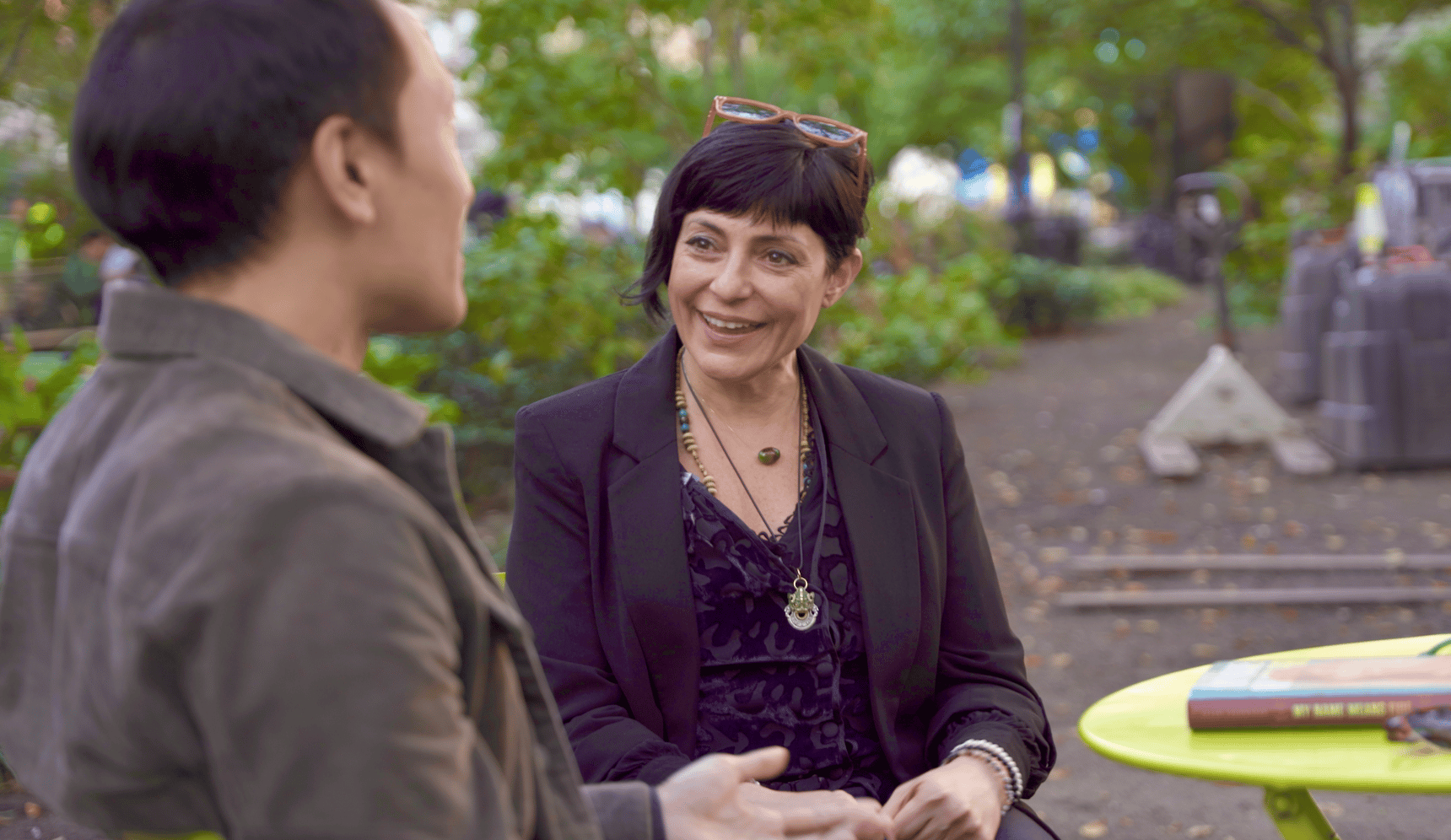- Kindred
- Posts
- When Curiosity Turns Into Wonder
When Curiosity Turns Into Wonder
W...is for Wonder

The moment awe makes you quiet.
We all know that feeling.
When you’re standing before a mountain, and your body suddenly remembers how small it is.
That moment your mind stops asking questions, and just beholds.
What if that same awe could happen…with people?
What if we looked at another human being and felt that same wonder?
I think we can.
I think we’re meant to.
One Body. Thirteen Parts.

One of my most fascinating interviewees yet.
I recently interviewed Atash, an Iranian woman living with Dissociative Identity Disorder - what used to be called multiple personality disorder.
Interviewing Atash is like having multiple conversations within a single body. Each of her parts - she calls them colors - carries its own voice, temperament, and history.
There’s Blue, a young man still finding his way, quiet yet confident beneath the uncertainty.
Black, an adult woman, fierce and justice-oriented.
Red, her playful inner child who giggles between sentences.
Atash’s story begins when she was four. Her grandmother, unable to move easily, would tie her to the bed to keep her safe from harm.
In that stillness, Atash’s mind learned to travel. She began to imagine herself playing outside, surrounded by invisible friends - the earliest forms of the “colors” that would later protect her from far greater pain.
As she grew up amid the unrest of 1980s Iran - experiencing child abuse, religious oppression, violence, inequality - her different parts began absorbing different pieces of trauma so the rest of her could go on living, with some parts vanishing for 10+ years before returning.
Over time, Atash devoted her adult life to understanding and integrating her parts - through therapy, journaling, prayer, and a whole lot of self-work.
Today she functions as a thriving, harmonious system of thirteen distinct parts.
When she needs confidence, she calls on Black.
When she’s exhausted, she lets Red take over to infuse playfulness.
When she cooks for friends, she becomes Orange, the mother among them all.
Atash’s story was fascinating. What began as a way to escape childhood boredom - the imaginative powers of her mind - later became the very mechanism that allowed her to survive trauma without turning to drugs, self-harm, or despair.
Her story stands as a testament to the mind’s miraculous ability not only to protect itself, but to heal and transform pain into resilience.
At one point in our conversation, I asked:
“So what happens when you die? Do all your parts go on, or just one?”
She laughed.
“That’s an interesting question,” she said. “I think my mind did what it needed to do for this life. In the next one, it’ll find a new way.”
What began as a discussion about a mental condition turned into a meditation on the nature of consciousness - and, ultimately, creation itself.
That’s when I knew my curiosity had turned into wonder.
If man was made in the image of God, what did Atash’s condition say about the nature of God?
Do we all actually have multiple personalities as well? Except the boundaries of ours are much less defined than Atash’s?
When We Encounter the Divine in a Person
Wonder happens in that exact moment - when you stop trying to understand and simply behold.
It’s when curiosity, which gathers facts, suddenly meets mystery, which humbles you.
You feel it when a story stops being interesting and becomes sacred.
When you see not just a mind at work, but a reflection of God’s imagination.
How to Uncover Wonder
You might think:
Sure, Atash’s story is extraordinary. But what about ordinary people?
To that I’d say:
I don’t believe there’s such a thing as an “ordinary” person.
Dig deep enough and you’ll find that every human life - every hidden ache and quiet triumph - contains something astonishing.
It’s simply a mindset shift.

Everyone carries a universe you’ll never see.
Curiosity dives into the what and how. Wonder steps back to glimpse the why.
Curiosity looks at a person. Wonder looks through them.
Curiosity wants to know. Wonder wants to behold.
It’s the difference between talking to someone about their breakup - tracing the reasons, the immaturities, the heartbreak - and stepping back to marvel at how life uses heartbreak to teach us how to love.
Or hearing someone talk about losing a parent or loved one, and realizing that grief itself is proof of how deeply we can care. That love is beautiful even in loss.
Moments like these turn curiosity into reverence.
Practicing Wonder
Wonder isn’t something that happens to the lucky few. It’s a posture we can practice.
Slow down. Don’t rush to fill silence - sometimes awe lives in the pauses.
Ask questions that reveal mystery, not just information. Are you interested in philosophy, science, entertainment or politics? Relate the person’s story to your interests and worldview.
Zoom out. Connect the details of a story to the bigger picture of being human.
Stay grateful and hopeful. Wonder often begins where gratitude lingers, where silver linings are sought and hope is uncovered.
Let yourself be moved. Don’t just understand people - feel them.
Because maybe people are mountains too - not to be climbed or explained, but to be marveled at.
And when we start to see one another that way, curiosity becomes worship, every conversation a chance to glimpse the divine.
With curiosity,
Eric
P.S. Looking to jumpstart 2026? I currently have some more coaching slots open going into the new year. If you’re feeling stuck or just need some help, email me to connect.
If this article was helpful consider forwarding it to a friend. If you haven’t subscribed yet, click the button below to subscribe and never miss out on more articles: